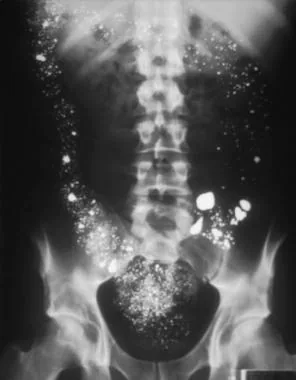Not All Metals Shine Bright in the Body
Mercury is one of those strange elements you probably remember from high school science class—liquid at room temperature, silvery, and hypnotic. It swirls in old thermometers, looks harmless in small amounts, and once fascinated generations with its unique properties. But here’s the truth: mercury is not your friend. Especially not when it ends up inside your bloodstream.
And that’s exactly what happened in one recent medical case that still has doctors and toxicologists shaking their heads—a 21-year-old woman intentionally injected elemental mercury directly into her vein.

A Case So Rare, It Made Medical History
This wasn’t a simple exposure or an accidental spill. It was deliberate. This young woman injected pure liquid mercury into her body—an act that instantly turned her life into a race against time.
Why is this so serious? Because once mercury hits the bloodstream, there’s no slow trickle. It spreads fast. The metal doesn’t get filtered out like a typical toxin. Instead, it lodges itself in organs, clogs tiny blood vessels, and begins poisoning from the inside out.
Doctors rushed into emergency mode. Not only because of the rarity of the case, but because of how unpredictable mercury behaves in the human body—especially when it gets this kind of VIP access to every vital system.
Video: Touching mercury
What Mercury Does Once It’s Inside You
So, what exactly happens when liquid mercury bypasses your skin and lands directly in your veins?
It doesn’t mix like medicine. Instead, it breaks into tiny droplets that act like microscopic bullets, traveling through the bloodstream until they crash into vital organs. And that’s where the real damage begins:
- Lungs: Mercury can vaporize internally, leading to chemical pneumonitis—a severe lung inflammation that causes coughing, chest pain, and breathing difficulties.
- Kidneys: These filtration machines get overwhelmed. Mercury damages renal cells, and if exposure is high enough, it can lead to full-blown renal failure.
- Brain: Neurological symptoms like memory loss, tremors, emotional swings, confusion, and seizures start showing up when mercury crosses the blood-brain barrier.
- Liver: Over time, mercury interferes with liver enzymes, leading to reduced function, toxin buildup, and jaundice.
In this case, the woman experienced multiple symptoms in a matter of hours. Her condition deteriorated rapidly, and only a fast medical response gave her a fighting chance.
The Fight to Save Her: Emergency Treatment
The only viable option in such cases? Chelation therapy. It sounds technical, but it’s basically a chemical rescue mission. Doctors use agents like dimercaprol or EDTA—substances that bind with mercury to form compounds the body can excrete through urine.
But even chelation has its limits. Mercury doesn’t always play fair. It hides in fatty tissues, especially the brain, where chelation agents can’t always reach. That means the damage may already be permanent by the time treatment starts.
In extreme cases, surgical intervention is considered. That’s right—surgery to physically remove mercury globules trapped in tissue. It’s dangerous, experimental, and often a last resort.

More Than a Toxicology Nightmare: Mental Health Matters Too
As shocking as the case was medically, doctors also had to address the why behind it. Injecting mercury isn’t a casual mistake—it suggests serious emotional distress or even suicidal ideation. This case became a crucial reminder of how deeply physical health and mental health are connected.
Alongside toxicologists and surgeons, the patient also needed psychiatrists and counselors. Healing from an act like this doesn’t just involve the body—it’s a journey of emotional recovery, too.
Where Did She Even Get the Mercury?
While most of us associate mercury with old-school thermometers or antique science kits, the metal still exists in certain industrial, lab, and even household products. Though heavily regulated today, it hasn’t vanished completely.
That’s part of what makes this case so alarming—it highlights just how easy it can be to access something so incredibly dangerous, especially if someone is determined enough.
It raises the question: Are we doing enough to educate the public about the risks?
Video: What Happens If You Drink Mercury?
Why Mercury Is Still So Dangerous Today
Let’s clear something up. There are three major types of mercury, and all of them are dangerous in their own way:
- Elemental mercury – the silvery liquid used in thermometers and barometers.
- Inorganic mercury compounds – sometimes found in older antiseptics and outdated cosmetics.
- Organic mercury compounds – such as methylmercury, the kind that builds up in fish and seafood.
The woman in this case used elemental mercury. While it’s dangerous to inhale or touch, injecting it skips every natural defense your body has—and transforms it into a systemic poison within minutes.
What This Case Tells Us (And Why We Shouldn’t Ignore It)
This wasn’t just a bizarre medical anomaly. It was a wake-up call.
- We need better education about mercury and other hazardous materials.
- We need stricter control over access to toxic substances.
- We absolutely need stronger mental health support—because no one makes a choice like this without some deep pain beneath it.
The medical world learned from this case. But so should the rest of us.
Conclusion: One Injection, Lifelong Consequences
The story of this 21-year-old woman is not just disturbing—it’s heartbreaking. One injection of mercury nearly cost her her life, and even with fast treatment, the long-term effects may never fully disappear.
It’s a sobering reminder that just because something looks harmless (or scientific, or shiny) doesn’t mean it’s safe. Mercury, in any form, is dangerous—and when it hits the bloodstream, it becomes lethal.
Let this case serve as a serious warning: curiosity or crisis can’t undo what heavy metals do to the human body. And when it comes to substances like mercury, there are no shortcuts to safety—only consequences.